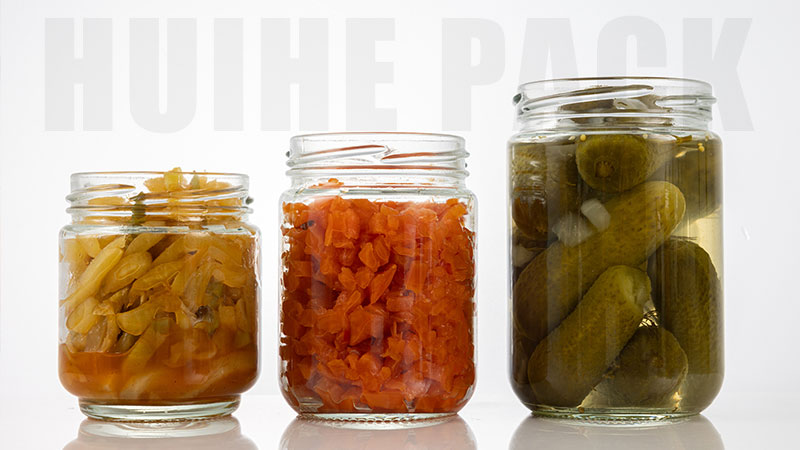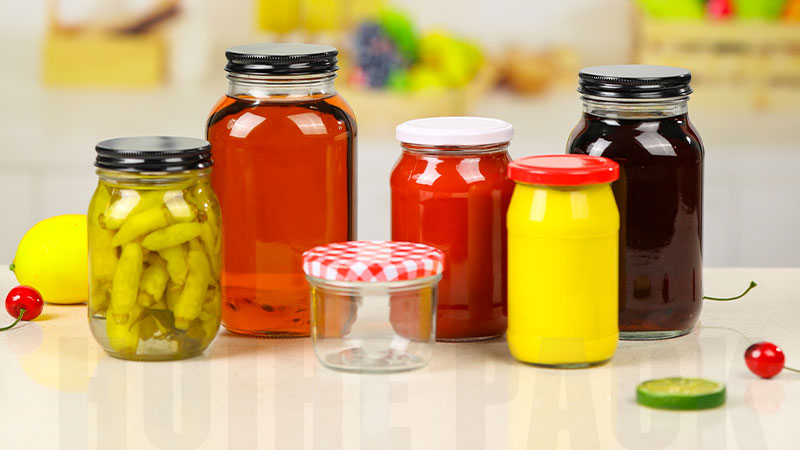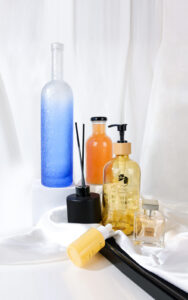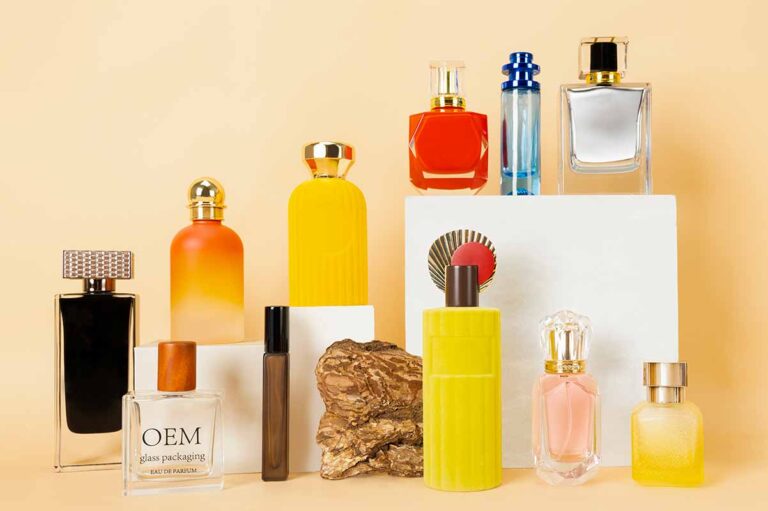If you’ve ever made pickles at home or run a small food business, you’ve probably faced a few common problems — the pickles lose their crunch, the flavor changes, or worse, they spoil too soon. Sometimes they even pick up strange smells from other foods.
Have you ever wondered if the jar you’re using is the culprit? What kind of jar can actually solve these problems and keep your pickles fresh, tasty, and safe for longer?
In this guide, we’ll walk you through how to choose the best jars for storing pickles — from materials and sealing types to size and color. Whether you’re a home cook or a pickle manufacturer, you’ll learn exactly which jar keeps your pickles crisp, flavorful, and safe for long-term storage.

Why the Right Jar Matters for Pickle Storage
Pickles are loved all over the world—think spicy kimchi from Korea, crunchy gherkins from Europe, tangy Indian pickles, and sour sauerkraut from Germany. No matter what kind you make or enjoy, one thing is for sure: the jar you choose makes a huge difference.
Choosing the right jar isn’t just a small detail. It directly affects your pickles’ flavor, how long they stay fresh, and even how safe they are to eat. That’s why so many people ask, “which jar is good to store pickles” and search for the “best jar for pickling”. The wrong jar can ruin all your hard work, but the right one keeps your pickles at their best.
So if you’ve ever wondered which jar is good to store pickles or what makes the best jar for pickling, the answer starts with understanding what really matters in your jar’s material and design.
Not all jars are created equal. When choosing a container for your pickles, a few simple features can make a big difference in freshness and flavor. Wondering what makes a great pickle jar?
What Makes a Good Pickle Jar?
Not all jars are created equal. When choosing a container for your pickles, a few simple features can make a big difference in freshness and flavor. Wondering what makes a great pickle jar?
Below are the key factors that define a good pickle jar and how to choose the right one for your needs.
| Factor | Why It Matters | Recommended Choice |
| Material | Affects freshness, safety, and flavor. Plastic can react with acids or absorb smells, while glass keeps your pickles pure. | Glass jars – non-reactive and odorless. |
| Airtight Seal | Keeps air out and prevents mold or oxidation, which can ruin the brine. | Silicone or rubber gasket lids for an airtight jar for pickles. |
| Transparency | Lets you easily monitor the fermentation and color changes without opening the lid. | Clear glass jars for visibility. |
| Size & Shape | Should fit your pickle type and allow enough space for brine to cover everything evenly. | 500ml–1L standard jars for most uses. |
| UV Protection | Prolongs shelf life, especially if the jars are stored near sunlight. | Amber or green glass jars. |
When it comes to glass vs plastic jars for pickles, glass always wins for long-term storage. It’s safer, more durable, and preserves the natural taste and texture of your pickles without absorbing odors or stains.

Popular Types of Pickle Jars: Comparing Different Materials
Before you decide which jar is good to store pickles, it helps to understand how different materials perform. Each type of jar has its pros and cons, but when it comes to food safety, freshness, and flavor, glass jars stand out as the best option.
| Material | Advantages | Drawbacks | Best For |
| Glass | Safe and non-toxic — no chemical leaching. Transparent for easy monitoring. Resistant to acid and salt in brine. Recyclable and long-lasting. | Can be slightly heavier and fragile if dropped. | Ideal for all types of pickles and commercial food storage. |
| Plastic | Lightweight and inexpensive. | May release harmful chemicals over time, absorbs odors, stains easily, and not suitable for high-temperature sterilization. | Temporary or short-term storage. |
| Ceramic | Maintains temperature well and gives a traditional look. | Heavy, non-transparent, and more expensive. Can chip or crack easily. | Specialty or traditional-style pickles. |
| Metal | Durable and reusable. | Can rust, react with acids, and affect flavor. Not food-safe for long-term pickling. | Dry goods or decorative storage only. |
Among all materials, glass jars are clearly the best jars for pickling. They keep your pickles safe from contamination, let you see the fermentation process, and don’t react with vinegar or salt. That’s why most professional pickle brands and home makers choose glass — and why at HUIHE, we specialize in food-grade glass jars made for perfect pickling.
How to Store Pickles Properly (Quick Tips)
Once you’ve got the right jar (like a glass airtight jar for pickles), proper storage steps will keep your pickles fresh even longer. Here are quick, easy tips for “how to store pickles in jars” correctly:
1. Always sterilize your jars first.
Always sterilize your glass jars first. Boil them in water for 10 minutes to kill bacteria—this stops mold from growing.
2. Seal the jar tightly after adding brine.
Use an airtight jar for pickles to prevent oxygen from spoiling your brine. A tight silicone or rubber gasket works best for long-term storage.
3. Store in a cool, dark place.
Sunlight and heat can affect the color and taste of pickles. Keep your jars in a pantry or cabinet away from direct sunlight.
4. Avoid metal lids for acidic pickles.
Skip metal lids for long-term storage. Acid in pickles can make metal rust, which ruins flavor and safety.
5. Label each jar.
Label each jar with the date and ingredients. This helps you track when to eat them and remember what’s inside.
Follow these steps, and your pickles will stay tasty and safe for months!

Conclusion
Choosing the right jar may seem simple, but it’s the key to keeping your pickles tasting fresh and safe for longer. From the material to the seal, every detail matters — and that’s where high-quality glass jars truly stand out.
At HUIHE PACK, we design glass jars made specifically for pickled foods. Our jars are crafted from high borosilicate glass for better temperature resistance, paired with food-grade airtight seals to lock in freshness. For food brands and distributors, we also offer customizable labels and jar designs to help your products stand out on the shelf.
If you’re looking for a reliable, food-safe solution for pickling and food storage, our glass jars provide the perfect balance of durability, clarity, and brand appeal — keeping your pickles crisp and your customers satisfied.

FAQ
1. Can we store pickles in a glass jar?
Absolutely! Glass jars are the safest and most popular choice for storing pickles. They’re non-toxic, odor-free, and easy to sterilize. Plus, the clear glass lets you check on your pickles without opening the lid.
2. Which jar is best for pickles?
The best jar for pickles is a glass jar with an airtight seal. Glass doesn’t react with acids or salt, so your pickles stay fresh, crunchy, and full of flavor. Look for jars with silicone or rubber gasket lids to keep air and moisture out.
3. What’s the best way to store pickles?
To keep your pickles at their best, use sterilized airtight glass jars, fill them with brine until all ingredients are covered, and store them in a cool, dark place away from sunlight. Always label the jars with the date so you can track freshness.
4. Can I store pickles in a plastic jar?
You can, but it’s not ideal for long-term storage. Plastic can absorb odors, stain easily, and may release harmful chemicals when in contact with acidic brine. For safety and flavor preservation, glass jars are the better choice.
5. How long can pickles last in a glass jar?
When stored properly in a sealed glass jar, most pickles can last 6 to 12 months without losing their crunch or flavor. Always make sure the brine fully covers the pickles, and avoid exposing the jar to heat or sunlight.
6. Do pickles need to be stored in airtight jars?
Yes. An airtight jar for pickles is essential to prevent bacteria and mold from growing. It also keeps oxygen out, helping your pickles stay crisp and flavorful for much longer.
7. What size jar is best for homemade pickles?
For small batches, 500ml to 1L jars are usually perfect. If you’re making pickles in bulk or running a food business, larger 1L–2L jars provide more space and are easier to handle for packaging and storage.




